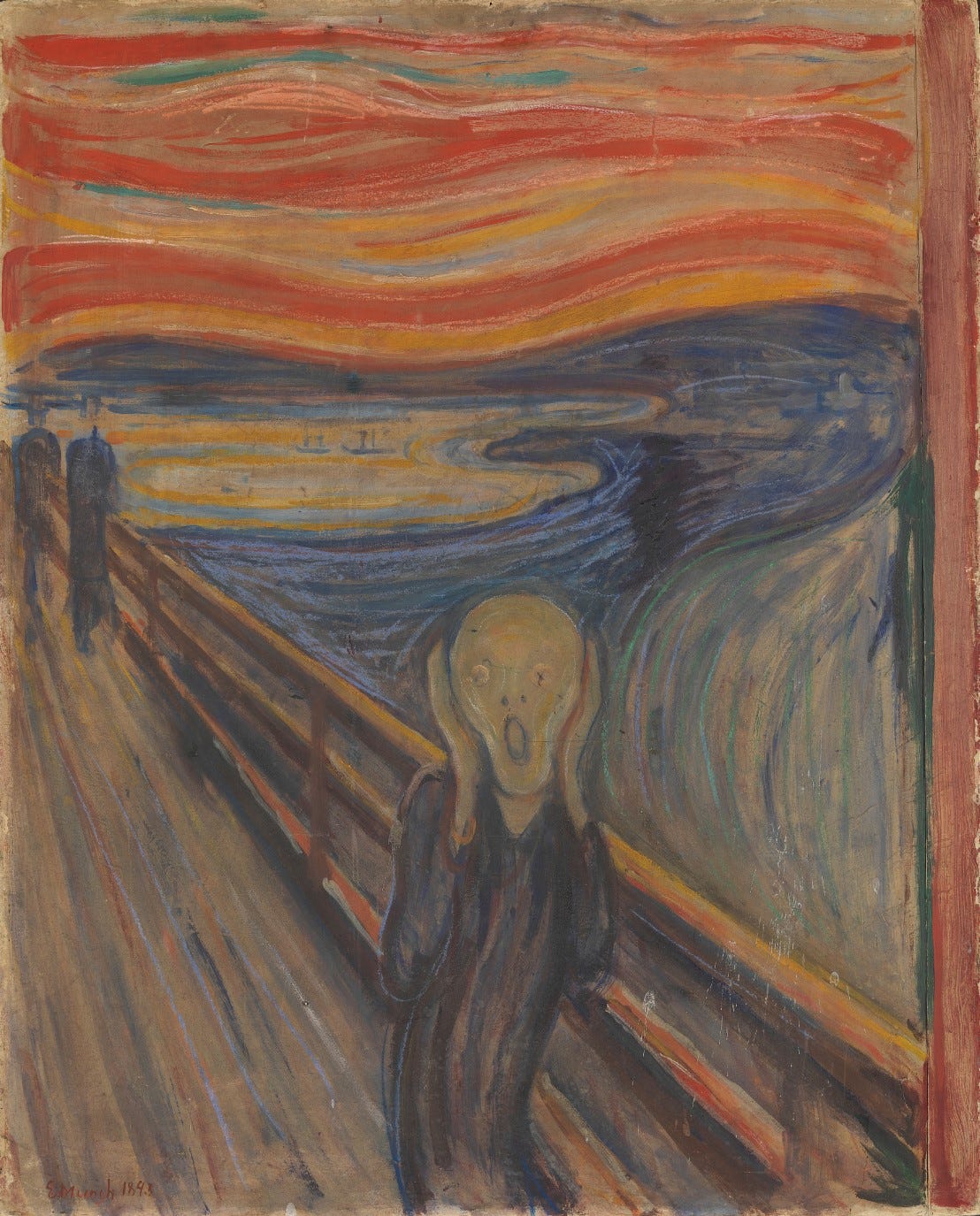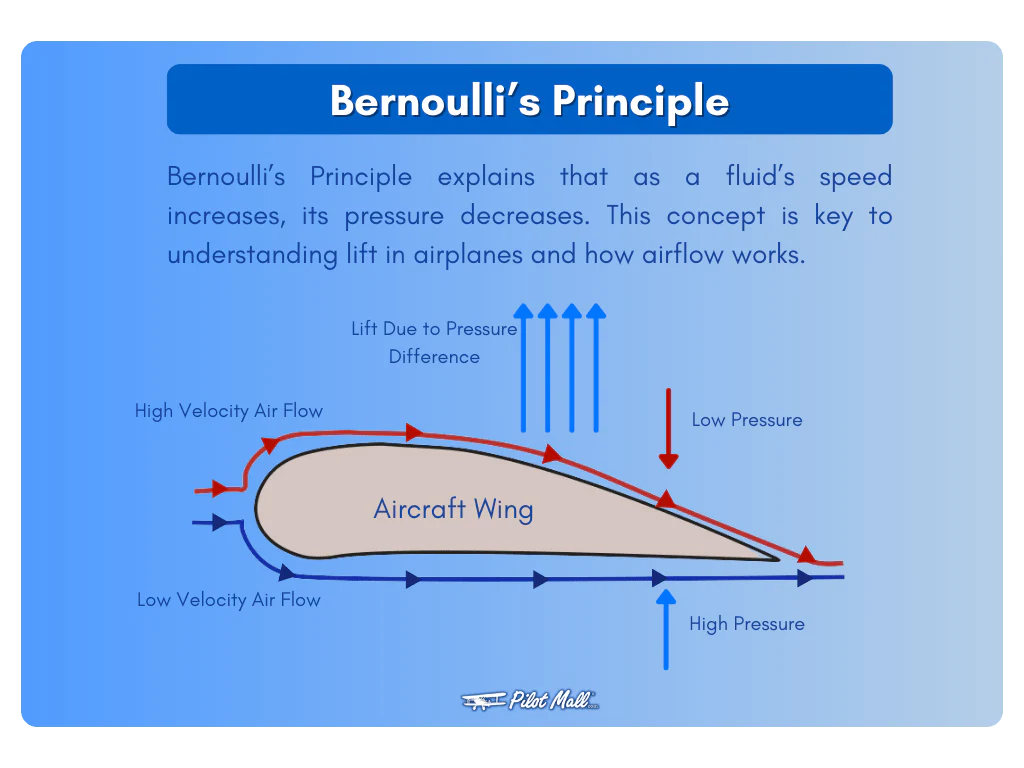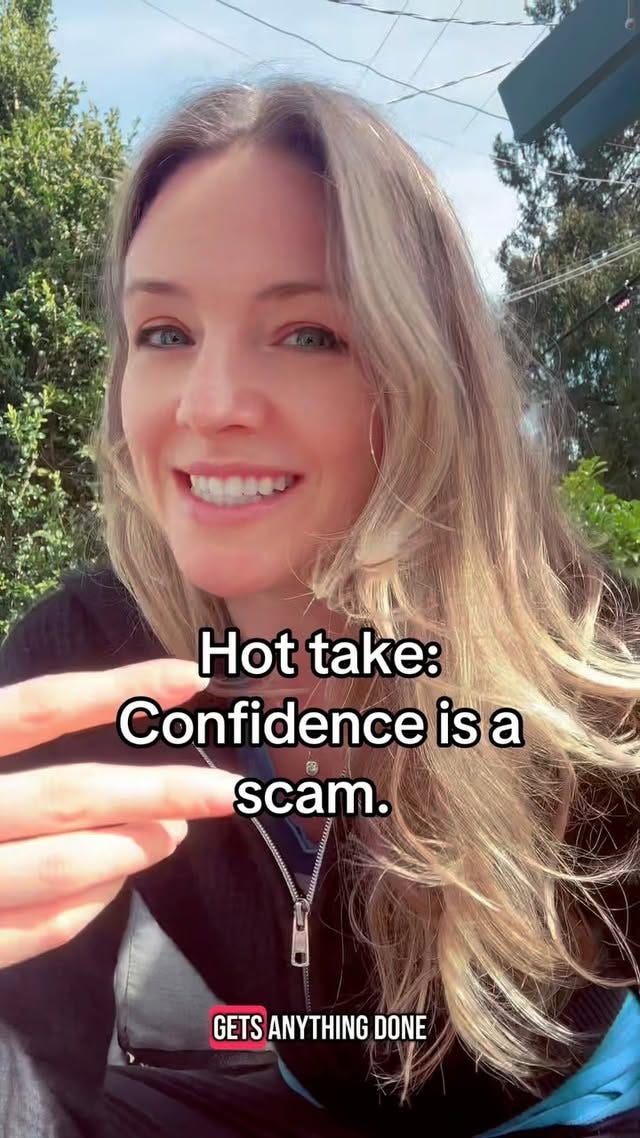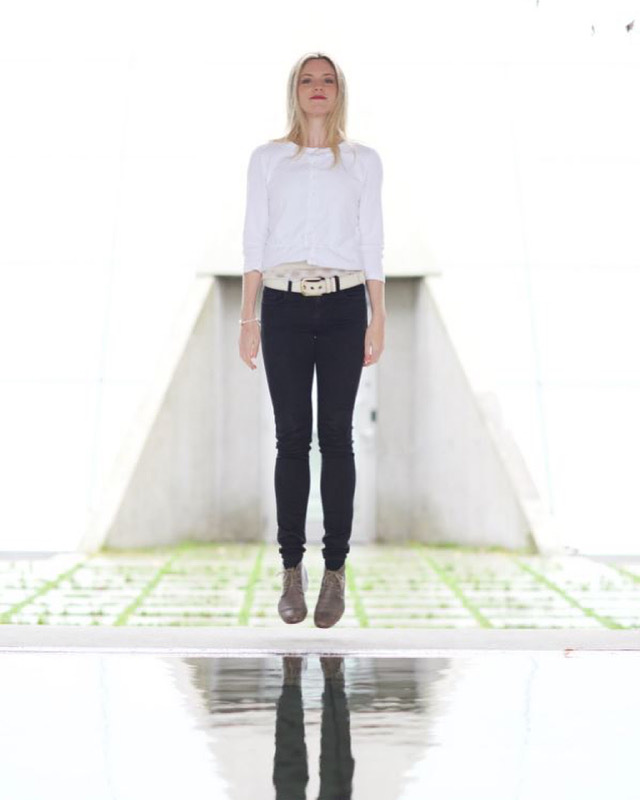The Physics of Persistence
What Hydrofoiling Taught Me About Writing
Two years ago, I was drowning in creative resistance. I started this Substack—in a momentary high-vibe state—as an act of rebellion against my very low-vibe state.
Today, I’m so excited to share that Wannabe Wisdom has hit 100 subscribers! Thank you from the bottom of my heart. Your support means everything.
To celebrate, I bought myself a Dairy Queen ice cream log (as one does). The man who sold it had just immigrated from India and told me he has a YouTube channel with 70 subscribers. We gave each other invisible high-fives and some mutual encouragement to keep going.
When I started Wannabe Wisdom in June 2023, I was clawing my way out of creative paralysis. Don’t get me wrong, I did manage to create some things the decade earlier: audition self-tapes, a music video, a short film, journal entries, paintings—but I was seeking a deeper vulnerability. I had so much passion inside me, but it felt stuck.
I wanted to write, consistently—and share it.
But first, I had to face something big:
Fear.
In the thick of 2021, when the world was still half-closed and half-holding its breath, I turned (once again) to The Artist’s Way by Julia Cameron1. I’d done it so many times over the years. Each time, something new was offered: a short film idea, a nudge to take piano lessons, a business idea, a creative project started—and sometimes even finished.
“Confidence isn’t the starting point. It’s the result.”
But no matter how many times I worked through the self-doubt, it always came back. Here I was again. Full of fear. And resentment toward myself for letting it get this far.
Cameron writes:
“In order to work freely on a project, an artist must be at least functionally free of resentment (anger) and resistance (fear). Any buried barriers must be aired before the work can proceed.”
“[…] a radical and timeless expression of human fear.”
Edvard Munch, The Scream, 1893.2
It was through the daily Morning Pages—those raw, stream-of-consciousness journal entries—that I began to clear space. Eventually, I felt the nudge to take a writing workshop. I followed it. I met other lovely creatives. A few of us formed a small group and met weekly. We shared our writing. We shared our self-doubt. And I slowly began to share my voice. I felt out of my depth, but I kept showing up to this group.
“There’s value in my voice now—not in some future, more evolved, more healed, more polished version of me.”
David Bowie once said it’s the artist’s job to always be a little out of their depth—that when we’re in unfamiliar territory, when the work feels uncertain or uncomfortable, that’s exactly where we’re meant to be.3
I try to remind myself of this:
"Always go a little further into the water than you feel you're capable of being in. Go a little out of your depth, and when you don't feel that your feet are quite touching the bottom, you're just about in the right place to do something exciting."
Eventually, I launched a WordPress blog. My friend Jay helped me brainstorm names, asking: Who are you writing for? What do you want your readers to feel?
I remember saying, I want to help people work through imposter syndrome, heavy moods, blocks… because that’s what I’m working through.
I landed on Wannabe Wisdom because it gave me permission to write badly, awkwardly, imperfectly. I wasn’t claiming to be wise, literary, or funny—the title made that clear. These were the Diaries of a Fake Guru. If someone found something useful or beautiful in it, that was up to them. I wasn’t spoon-feeding anyone.
But I did, in fact, have a secret mission: I wanted to leave readers with both a giggle and an insight. I wanted to make people laugh and soul-search at the same time. The difference was, I took all the pressure off myself to have to.
One particular piece I wrote was gut-churning to write. It felt like a risk. But in the privacy of our group, my friend’s comments reflected my own heartbreak and healing right back at me. It taught me that I could be vulnerable on my own terms. I could share openly—yet be in control of what I shared.
For two years, our writing group met weekly. We wrote about family, stories of trauma, stories of transformation, poetry, food, food poetry, crime noir, fiction, and memoir. We talked about politics, creativity, our goals, and self-doubt. We got honest about that gnawing feeling of not being “good enough” and wrote through it all. Slowly, my voice on the page started to grow stronger—so did my peers’.
One of the members, Grace Quantock, published her book in 2024: Living Well with Chronic Illness.4 She helps marginalized people live well with pain, illness, and trauma—without burning out. I light up when I think about her incredible journey, and I feel lucky to have shared in even a small slice of it. She gives me hope that maybe, one day, I too could publish a novel. She even gave a special shoutout to our group in her book!
A Substack Commitment Begins
That brings me to 2023, when my husband and I learned the home we’d been living in for seven years had sold, and we’d have to move out in two months.
We’d always talked about traveling through Central America, and since we had no idea where the heck we’d live next, we figured—why not now? I quit my in-between job—the one I took after leaving a stable, seven-year corporate career—we put everything in storage, my mom and step-dad agreed to look after our dog, and we planned a five-month adventure through Panama, Costa Rica, and El Salvador.
You can read that first post here: "Unveiling the Path."
So, I started this Substack. And I showed up. Not weekly. Not even biweekly. Sometimes, months would pass without a post. Behind the scenes, I killed drafts that didn’t feel “good enough.” But I kept showing up.
Like I said, I didn’t write as prolifically as I’d imagined—and yes, I berated myself for not doing more. Sometimes, I’d finally get a piece to feel just right, send it to my dad for proofreading, and still wake up the next day with a vulnerability hangover.
This is part of the gig.
But now, looking back, that was two years ago.
100 subscribers later.
33 essays later.
I still have a lot of creative resistance (and resistance in general).
In fact, many of my posts are about that exact thing:
Working Through Creative Resistance
Lately, I’ve been reflecting on how I work through resistance. And weirdly, it reminds me of a principle my husband is obsessed with: Bernoulli’s Principle of flight.5
He’s been teaching himself to hydrofoil for the last couple years—a relatively new, niche sport. It’s a surfboard that—with enough momentum and energy—rises up and hovers above the water, balanced on a submerged mast. It looks like something from the future. Here’s a video of him flat-water pumping. You don’t need waves. Just thighs made of steel.
As he recently described how Bernoulli’s Principle works, it hit me—this is exactly how I’ve worked through creative blocks to find flow.
In hydrofoiling, the speed of the water above the wing creates low pressure, and the slower water below creates high pressure. This imbalance of the two pressure systems creates lift, allowing the board to rise.
My writing process feels like that.
If I can create “low pressure” by challenging my inner critic daily (and acknowledging it—oh, hello there) while also building “high pressure” under my feet by simply showing up—publishing posts, sharing ideas, creating connection (even when it feels like no one’s reading)—then I’ll create lift. Guaranteed. It’s physics.
That lift is the confidence that comes from building trust in the process, and ultimately, in yourself, over time. It’s not flashy. It’s not instant. It’s like an absentee parent slowly earning back a child’s trust—not with grand gestures, but with quiet consistency.
It’s hard fucking work (excuse my language).
And then—suddenly, one day—you lift.
We love to think confidence comes from believing in ourselves. But the truth is: Confidence is the result, not the starting point.
(I made a video: “Confidence is a Scam” on IG and TikTok.)
When Lift Happens
Once that lift happens, there’s space for more—for new energy.
I hosted my first Substack Live conversation, Writing Life: Finding Your Voice and Moving Through Creative Blocks, with author and literary agent
. It was a kind of lift I hadn’t felt in a long time: real-time dialogue about creativity, voice, and showing up on the page.A.J. shared something I keep coming back to:
“Even if what you write isn’t polished, your voice right now matters. Who you are today will never exist in this exact form again.”
I’ve been letting that echo. echo. echo. echo...
I won’t exist in this exact form again. There’s value in my voice now—not in some future, more evolved, more healed, more polished version of me.
But just like hydrofoiling, that lift isn’t a permanent state. If my husband stops pumping, the board sinks. If I stop writing, synthesizing, perceiving and seeing, I sink too. But we also need rest. Sometimes, we have to put it away, let things settle (let our thighs heal), and return when we’re ready. Other times, we need to push through.
Every small adjustment, every wave of persistence, every quiet decision to nurture your creative voice all adds up.
And still, I find myself circling the question again:
Why do I write?
Not just what I write. Not even who I write for.
But why I keep showing up—especially when it’s hard.
I write personal essays to help others feel less alone—and in the process, I feel less alone too. I write for the deep feelers and the overthinkers. For the ones who whisper, Is it normal to feel this much? For those learning to trust themselves again.
But if we’re being totally transparent here, that’s not the deepest reason.
I write because I’m a seeker. A sense-maker.
Writing is how I authorize my life. For so much of my life, I numbed myself. I gaslit my experiences more than anyone else ever could. I erased whole chapters—not because they didn’t happen, but because I didn’t know how to hold them. Writing is how I stop disappearing. It’s how I tell myself: Yes, that mattered. You were there. You felt that. And it’s real, even if no one saw it. Even if no one cried…or clapped.
I write to return to myself.
To say: I was here.
To whisper to you: You are too.
My mom recently sent me a video of a family friend doing something remarkable: he’s reclaiming his native language and refusing to speak English. An act of resistance.
It reminded me that language isn’t just how we communicate. It’s how we claim who we are. That’s why I write.
And if all I ever offer is wannabe wisdom from a fake guru trying her best—then I’ve done my job.
With love + rebellion,
Ashley aka Fake Guru
Question for the comments: Is there a part of you you're trying to reclaim through your creative work, or just through being more honest with yourself?
Julia Cameron, The Artist’s Way, Week 9 https://www.amazon.ca/Artists-Way-25th-Anniversary/dp/0143129252
Painted in 1893, Munch’s iconic Scream was donated to the National Gallery in 1910. In terms of its fame, this painting now rivals works such as Leonardo da Vinci’s Mona Lisa (1503) and Van Gogh’s Sunflowers (1888). Few artworks have inspired filmmakers, cartoonists and other artists to the extent that The Scream has done. The painting is a radical and timeless expression of human fear. https://www.nasjonalmuseet.no/en/stories/explore-the-collection/edvard-munch-and-the-scream-in-the-national-museum/
“David Bowie's Advice to Young Artists”. Excerpts from the Michael Apted DVD "Inspirations" (2002)
“Living Well with Chronic Illness: Write your own roadmap to healing in tough times.” Sept. 12 2024, https://www.amazon.ca/Living-Well-Chronic-Illness-roadmap/dp/139871979X









This is just beautiful. I feel so seen in your writing. It feels good to know you’re not alone, and I 100% agree that confidence is the result :) You need to act, to be who you want to be first, the confidence follows after doing ❤️
I really liked the Bernoulli principle example. Never knew that about planes. And the way you applied it to writing.